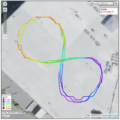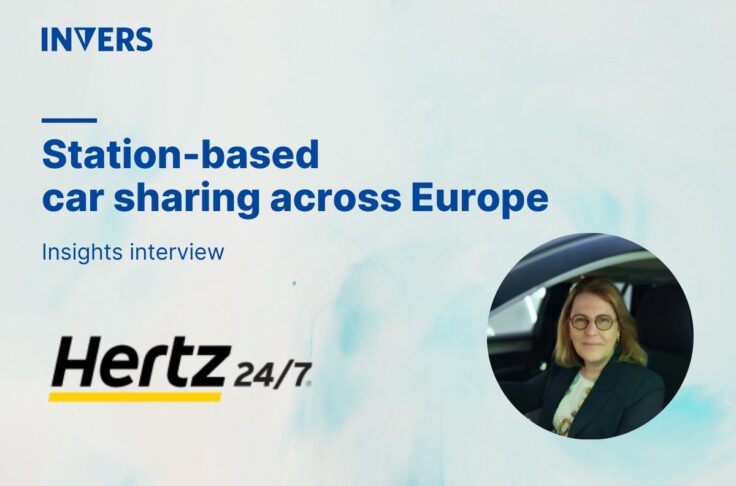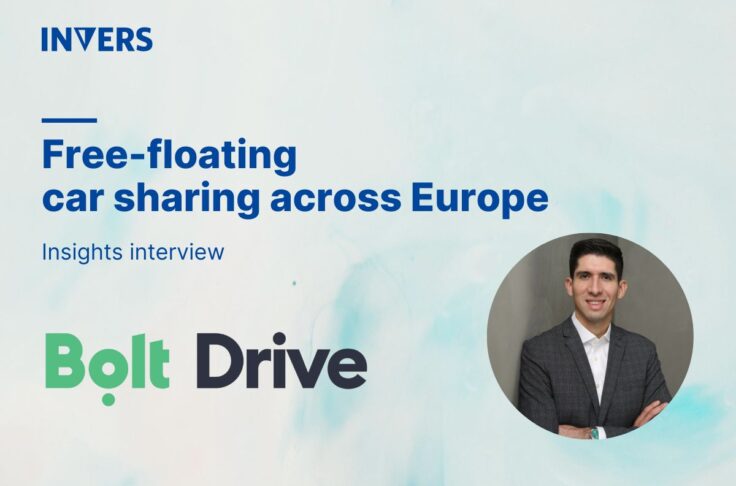The Ultimate Guide to Driver Behavior Monitoring in Car Sharing

Summary
Driver behavior monitoring uses telematics data to identify speeding, hard braking, harsh cornering, or accidents from customers using your shared vehicles. A reliable telematics unit with built-in accelerometers is key to get full monitoring capabilities and real-time insights. It helps you to increase vehicles’ lifespan, discover unreported damages or manage bad driving customers.
What is Driver Behavior Data?
It’s impossible to completely prevent vehicle misuse of shared vehicles, but the right data can help you understand and monitor your drivers’ behavior in real time. This data can be turned into actionable insights for your operations. Typically, driver behavior data is a collection of events that happen over the course of a rental period, in real time. A driver behavior monitoring system commonly tracks the following events:
- Speeding
- Heavy braking
- Heavy acceleration
- Harsh cornering
- Incidents and accidents
Driver behavior monitoring system gather data and notify you about incidents based on criteria you’ve set. They organize these incidents clearly and make the information actionable, to make it easier for your fleet managers to understand each event.
Benefits Of Driver Behavior Monitoring
Increase your vehicles’ lifespan
Your customers usually treat car sharing vehicles differently from their own. They have no feeling of ownership towards them, so they feel less responsible for taking care of them. This lack of personal investment often leads to more reckless driving, elevating the risk of damages, and decreasing your vehicles’ lifetime value. Don’t be gentle, it’s a rental! With driver monitoring systems, you can start to prevent vehicle abuse and irresponsible driving. Cultivate a culture of responsibility and driver safety by letting your customers know that reckless driving is being tracked.
Learn about incidents your customers won’t tell you about
Allocating damages is difficult if you overlook them or don’t find them in time. Too often, operators end up having to cover costs out of their own pocket if customers refuse to take responsibility for their damages. For example, the image below-left shows a flat tire that would have been dismissed as a routine incident if not for the driver behavior data below-right that showed it was a result of reckless driving. Read more about this incident in the recap of our webinar about advanced data for shared mobility.

In the worst case, those damages can put the safety of the next driver at risk. A driver behavior monitoring system will alert you to incidents, so you won’t have to rely on your customers input. You’ll know which cars to pull out of service for further assessment, and you’ll have the time and geo-stamped proof needed to assess responsibility the right customer.
Recognize and manage high-risk drivers
Most of your customers will be good drivers, but the ones who aren’t will make you incur high costs. Let’s use speeding as an example: most customers might drive only slightly above the speed limit, but a few put themselves and others in danger by speeding excessively. Without driving behavior monitoring, you wouldn’t know about excessive speeding until the police catches your customers. Now, you can see events like this in your dashboard in real time. Armed with these insights, you’ll be able to weight the risks and benefits, and sanction the worst drivers if needed.
Be aware of incoming fees
It’s frustrating to get a letter with a speeding ticket for one of your rented vehicles. It’s even worse if it happens many times for different customers. The more tickets you collect, the more effort you have to put in to find out which customer is responsible for each one. Driver behavior monitoring will make you aware of speeding events in real time. With this information, you can prepare the next steps for incoming fees for speeding and other infractions. Allocate the fees to the exact rental period with proof of the infraction.
Get live updates on all critical vehicle events
Monitoring your vehicles 24/7 is too much effort, yet you would like to get updates on the most critical incidents. Certain driver behavior-enabled telematics devices, such as our CloudBoxx, will send you alerts about accidents involving your vehicles. You’ll then be able to call your customers to check on their well-being and call emergency services if necessary. You’ll also be able to quickly prepare a reconstruction of the accident using the driver monitoring data and prepare for an inspection of the damages.
How Driver Behavior Tracking Works
With the right technology, monitoring your customer’s driving behavior is a fairly straightforward solution for car sharing. You’ll need to install telematics systems with built-in accelerometers in your vehicles. You’ll also need to set up parameters in your fleet management software to be notified of incidents only above a certain severity level.
Speeding
A telematics device inside your vehicle will be able to accurately determine its speed and location using GPS technology. This data will then be compared to the speed limits on the roads where the vehicle was tracked. To prevent getting too many speeding notifications where your customers are going only slightly over the limit, you can set your own notification parameters. If your customers exceed the speed limit by your set parameter, you’ll get a speeding event notification with additional info about top speed, duration, location, and the speed limit on that section of road. All of this information is viewable at a glance on your dashboard, connected to the trip and rental period.
Heavy braking and acceleration
Driver behavior monitoring systems measure g-forces to determine whether hard braking or acceleration have occurred. However, there are different types of hard braking to keep in mind. In the city, short heavy braking events are common because of lower speeds. On the other hand, highway driving sees significantly longer heavy braking events. In this case, you’d like to know when the heavy braking event started, its duration, and when it ended. Long heavy braking events can have an impact on the vehicle that may endanger the safety of the next customer. This is why our CloudBoxx measures not only the amount of G-forces on the vehicle, but also the duration of each heavy braking event.
Harsh cornering
Harsh cornering is also measured through G-forces, with a clear starting event, duration, and an ending where the heavy cornering stops. Additionally, systems can measure whether the driver was accelerating or braking during the cornering event. This information is crucial to determine whether the driver is endangering the safety of others and your vehicles on purpose. The image below shows a driver behavior monitoring system visualizing the G-forces of a vehicle performing aggressive “figure-eights” on a parking lot.

Crash detection
Typically, the way driver behavior monitoring systems determine a crash is different from how they determine harsh braking or cornering events. A key difference is the amount of force the vehicle is exposed to. Typically, a force of 0.5G can be considered as aggressive cornering or braking, 1G will make the tires squeal, and anything higher than 1.5G is likely a crash.
When G-forces exceed the parameters set for a crash, the system will create a crash event with the following data:
- The speed of the vehicle
- The location of the vehicle
- Time of crash detection
- Duration of the deflection in ms
- Maximum deflection in mg
- Average deflection in mg
With this data, you can determine if an incident has occurred, and use the information to guide your next steps. For example, you might contact the customer to ensure their safety and well-being.
Driver Behavior Monitoring FAQ
Monitoring driver behavior is a powerful feature to identify reckless driving and prevent accidents with your vehicles. Here is an overview of what you need to know about driver behavior monitoring in car sharing:
What is driver behavior monitoring?
Driver behavior monitoring is a system that uses data to help car sharing operators understand and keep an eye on how their customers drive in real-time. The system collects data on events like speeding, hard braking, harsh cornering, rapid acceleration and accidents. It then sends notifications to the operator based on predefined criteria, which helps with fleet management by preventing vehicle misuse and addressing issues that customers might not report themselves.
How to start with driver behavior monitoring in car sharing?
You need to install a reliable telematics unit equipped with accelerometers in your vehicles. These systems use GPS to track speed and location, comparing it to road speed limits. They also measure G-forces to detect events such as hard braking, harsh acceleration, and cornering. Ideally, this is the same telematics unit that you also use to remotely lock and immobilize your vehicles to minimize cost, installation complexity, and battery drain. Once you have the hardware set up, you may need an API integration to automate driving events or show data in your own backend.
What KPIs will improve with driver behavior monitoring?
Increased vehicle lifespan by preventing reckless driving, improved safety measures by providing insights into incidents that customers may not report, reduced costs by identifying and excluding “bad apple” drivers who cause higher expenses, better preparation for fees such as speeding tickets.
Is driver behavior monitoring for car sharing legal?
Driver behavior monitoring is generally legal when done transparently, for clear purposes, with minimal data, strong security, and respect for user rights. For example, in the EU you should identify a lawful basis (often legitimate interests or contract) and obtain consent when accessing phone/app sensors to comply to GDPR. In the US, it’s typically permitted with clear notice, purpose limits, reasonable security, and compliance with applicable state privacy laws. This is general information, not legal advice.
Summary, and Further Reading
Implementing driver behavior tracking systems offers invaluable benefits for fleet management, including increased vehicle lifespan, enhanced safety measures, and the ability to identify and address misuse promptly. By leveraging real-time insights into driver behavior, operators can proactively manage their fleets, reduce costs associated with damages, and cultivate a culture of responsibility among customers.
Watch our webinar featuring MILES mobility to learn how they implemented and use driver behavior monitoring systems. Do you want to learn how you can make your fleet operations more sustainable, safe and efficient? See Driving Analysis in action.


